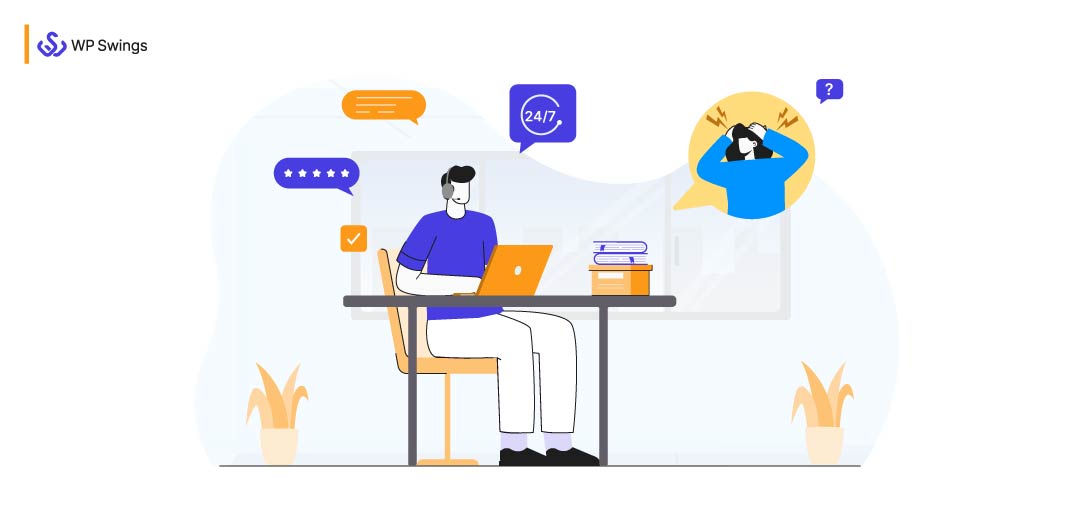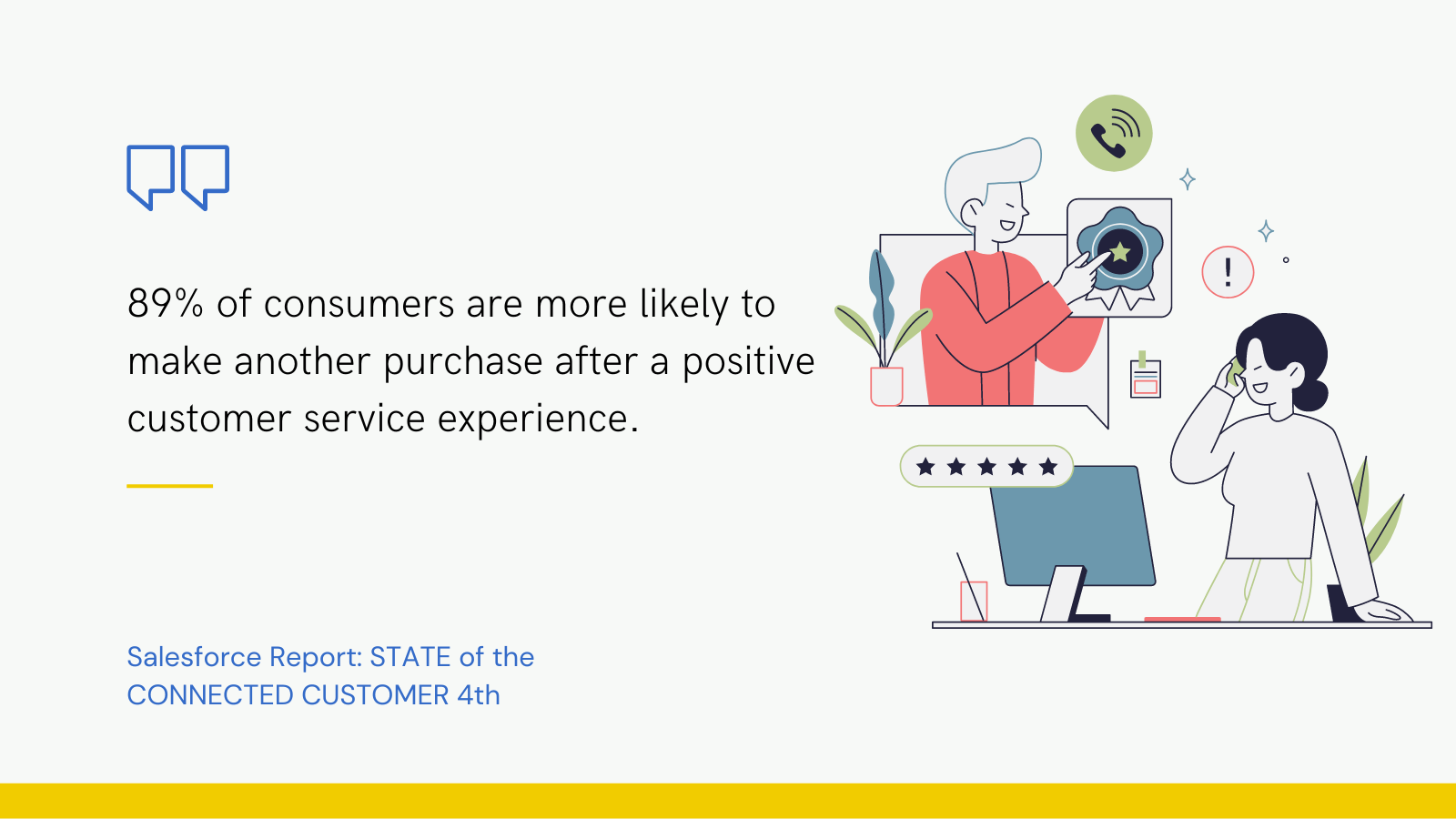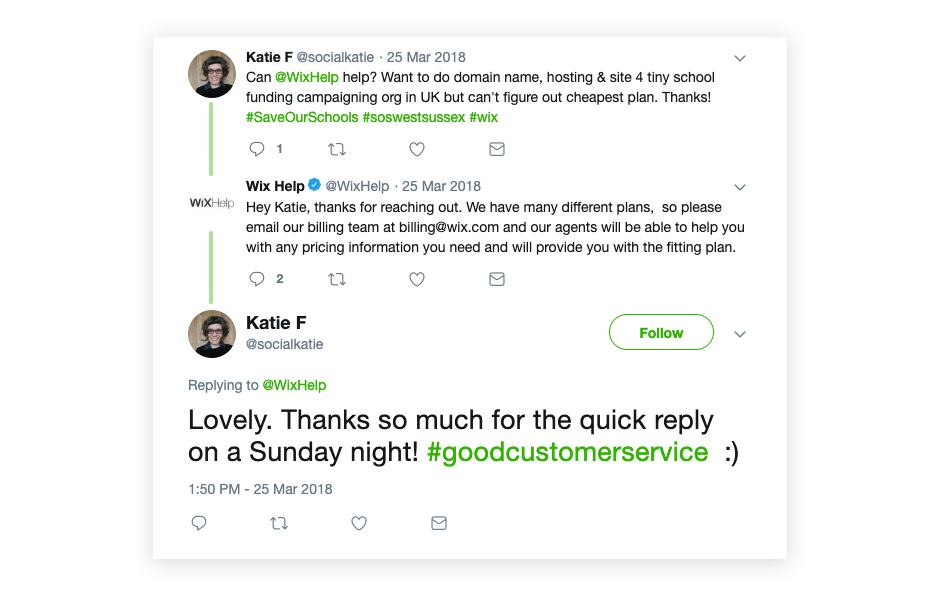
Customer Complaints can be a Boon or Bane, depending on how well you deal with them. These grievances arise due to several reasons inside and outside of your control.
Unrealistic expectations are also responsible for this conundrum. You have a better chance of finding a bigfoot riding a unicorn than a business with ideal customers and perfect products.
If your first response is to shun your troubled customers, you aren’t made for business. Dealing with frustrated customers is an art. You have the power to offer constructive support and covert the user or at least neutralize their resentment.
In this blog, you will learn the strategies to resolve or reduce customer complaints and provide more effective customer service to your customers.
Table of Contents
I. Understanding Customer Complaints and Their Types
Customer complaint refers to the formal expression of a problem or dissatisfaction by customers while using your product or service. While every business faces complaints, too much of it can be dangerous to your growth.
Customers may choose any available communication medium to contact you. God forbid they go all guns blazing on social media. Social media complaints have serious repercussions. A single word of mouth manifests into the butterfly effect, eventually becoming loud enough to shut your business down or hurt it significantly.
Other sources for receiving complaints include support email, contact number, live chat, WhatsApp, ticketing, on-comments, reviews, and more. Customers approach social media only when they can’t find a quicker complaint resolution method.
Those who have an organized custom support system on their websites can turn obstacles into opportunities. First, it helps you avoid getting negative feedback as internal communication lessens the chances of the matter going into the court of public opinion.
Second, you are able to solve customers’ problems and improve their experience. Therefore, you can increase customer satisfaction & retention by solving customer problems. Deploy what you must, but nip the issues in the bud.
Types of Complaining Users
1. Aggressive Complainer: These customers express their dissatisfaction in a forceful and confrontational manner. They may use angry or abusive language and may demand immediate solutions to their problems.
2. Passive Complainer: These customers express their dissatisfaction in a more subdued manner, often avoiding confrontation. They may hint at their dissatisfaction or use non-verbal cues to communicate their displeasure.
3. Chronic Complainer: These customers are never satisfied, and seem to complain about every aspect of their experience with a company. They may have unrealistic expectations or may simply enjoy complaining.
4. Constructive Complainer: These customers express their dissatisfaction more constructively, offering suggestions for how the company can improve its products or services. They may be more patient and understanding but still expect a satisfactory resolution to their issue.
[Source: wixanswers.com]
Regardless of the type of customer complaint, companies need to have effective procedures in place for handling customer complaints. This can include training staff to listen actively, empathize with the customer, and offer solutions that meet the customer’s needs. By addressing customer service complaints timely and effectively, companies can reduce customer complaints overall and improve customer satisfaction.
II. Common Causes of Customer Complaints
Customer service complaints are unique to every business. However, the pain points remain similar across online stores. In this section, I will uncover the common customer complaints.
1. Making Users Wait Too Long for Help
A frustrated customer needs immediate help, however minuscule their problem is. But addressing every customer complaint on a priority basis is impossible for you. So it results in long waiting periods.
The longer a user waits, the more they turn against you, more so if the matter impacts them financially.
If it takes too long, then customers would prefer to leave you. A chunk of customers you can lose simply because of not providing proper support. 90% of Americans use customer service as a factor in deciding whether or not to do business with a company.
The Solution: Implement efficient and streamlined complaint-handling processes, such as automated ticketing systems, & tiered support levels.
Additionally, you can provide proactive updates to customers about their complaints, offer alternative solutions or compensation if the resolution is delayed, and regularly review and optimize their complaint resolution procedures to minimize waiting periods.
2. Needing to Repeat Their Query
72% of customers say that explaining their problems to multiple people is poor customer service. (Dimensional Research).
This often happens when you are reaching out to an ISP operator. The first sales rep understands your query and starts suggesting the same old fixes that you have already tried on your end.
Failing to solve your problems, he forwards your call to another person (probably a higher-level representative who has the required expertise) but you have to explain your problem from the start again.
It can even include waiting on a call or chatting for a long duration and repeating yourself many times before finally being told that “Our experts are working on it as we speak. However, the complaint resolution period is 48 to 72 hours”.
[Source: SentiSum]
This feels like a gut punch to you. And it would feel the same to your users.
The Solution: Providing context is the perfect solution to this problem. For example, the Salesforce CRM can be used to provide context during complaint resolution by allowing customer service representatives to access a customer’s history and previous interactions with the company.
Your representatives can understand the customer’s issue and provide personalized solutions that are tailored to their needs.
Automate Your Customer Management & Increase Sales
3. Poor Product or Service
Sometimes we are quick to blame the laymen for not reading the well-written resources and point to their general lack of knowledge in handling the product or services.
But the fault may lie within you as well. What if you have a bad product and users are genuinely fed up with it?
It might be good if you listen to customer complaints more carefully and work on perfecting the solutions you offer.
Assuming innocence on your part can limit you from gaining crucial insights because no one will give you a better review than the end users.
The solution: So, take complaints as customer feedback for your business, find the most recurring issues, and try to prevent them from happening. You’ll significantly reduce customer complaints.
Handle Customers’ Feedback Like a Pro
4. Unsupportive Support Agent
You hire a support agent or representative to add a human voice to your sales & customer care department. But human beings are flawed. Your agent may have these problems:
1. Lack of Empathy: If a support agent does not show empathy toward the customers’ issues, it can cause frustration and make the customers feel unheard, leading them to make a complaint about the agent’s behavior.
2. Ineffective Communication: A support agent who is unable to effectively communicate with the customer can cause confusion or misunderstandings, resulting in a negative customer experience. So, the agent’s inability to address their issue can contribute to service complaints.
3. Poor Product Knowledge: Lacking the necessary product knowledge, they may not be able to provide adequate solutions to the customer’s issue and cause consumer dissatisfaction.
4. Unprofessional Behavior: An unsupportive support agent who is rude or unprofessional towards the customer can cause the customer to feel disrespected or undervalued.
The Solution: Improve your hiring process and provide empathy or sensitivity training to agents. Review their chats & calls to see if they are handling customer complaints up to the industry standard.
5. Hidden Policies
Who doesn’t like surprises? Your customers probably. When they find out you have no refund policy but it wasn’t brought to their notice during the checkout process.
Hidden policies lead to misunderstandings or frustration on the users’ end. It arises due to the following reasons:
Lack of Transparency: Customers mostly are simple-minded. They often don’t read your policies, so the responsibility to communicate your terms naturally falls on you.
Customers may not understand why certain actions are being taken or why they are being charged additional fees. This lack of transparency can cause customers to make complaints about the company’s policies.
Unreasonable or Unfair: If a company’s policies are deemed unreasonable or unfair by customers, it can lead to complaints about the company’s practices.
For example, if a company’s return policy is too restrictive, customers may feel that they are being taken advantage of, leading to complaints about the policy.
The Solution: To avoid complaints about hidden policies, businesses should clearly display policies during the checkout process, provide detailed explanations, regularly review and update policies, and offer channels for customers to seek clarification. Also, send email updates to users wherever you modify your policies page.
6. Difficulty Finding Helpful Resources
Customers need additional resources to properly understand product usage. Their first instinct is to fix the problem without contacting you. They only make a service complaint when they can’t solve the problem or do not find any helpful information on your site or the web.
If you don’t have the resources, customers have to waste their time searching on Google for solutions.
Sometimes knowledge bases & set-up articles are available but with incomplete or outdated information which fails to resolve customers’ issues.
In times of distress, customers prefer personalized complaint resolution according to their specific needs.
The solution: First & foremost, offer comprehensive and up-to-date resources to customers that help them understand product usage. This can include video tutorials, step-by-step guides, FAQs, and troubleshooting tips.
Also, create a dedicated & well-trained customer service team that is available to answer customer questions and provide personalized support to high-priority complaints.
To ensure that customers have access to the latest resources and information, it’s important to regularly update and maintain the knowledge base and set up articles. This can be achieved using a knowledge base software.
7. Lack of Support Channels
As a rule of thumb, always make sure your customers can connect with you easily through multiple platforms. However, many businesses remain stuck to limited channels for offering support.
According to our CX Trends Report, 93 percent of consumers will spend more with businesses that offer their preferred communication channels, whether that’s email, phone, or text.
The Solution: Start offering multi-channel support to your customers. Analyze & invest in the common platforms users use for connecting with you. For example, if your user base is active on Facebook, then getting a Messenger Chatbot will serve your business better.
8. Inconvenient Customer Service Hours
Customers want complaint resolution on their own time. However, it may not be feasible for you to provide support on odds hours, which leaves customers dissatisfied. According to the Sprout Social Index, 40 percent of consumers expect a response from businesses within an hour, while 79 percent expect a reply within the first 24 hours.
Solution: Observe the most common time customers complain and ensure that your representatives are present at those hours. For example, if your business has US clients but is located in India, you should have a support team working during the night to match the time difference.
III. Strategies on How to Handle Customer Complaints
Handling customer complaints requires consistent work on communication, problem-solving, feedback gathering, and more. The earlier you start improving your problem-resolution process the better competitive advantage you’ll have.
Hiring the Right Service Representatives
Hiring the right employees is crucial for handling customer complaints effectively. When hiring customer service representatives or support agents, businesses should look for individuals who possess the following traits:
Empathetic employees who can understand and relate to customers’ problems and concerns are better equipped to handle customer complaints compassionately and effectively.
Clear and effective communication with customers, using a friendly and professional tone, can help diffuse tense situations and find a middle ground.
Analyzing complex situations, thinking critically, and identifying potential solutions can help resolve complaints in a timely and effective manner.
Offer the Best eCommerce Customer Service and Win Customers
Representatives show know the company products & services like the back of their hand. So they can provide accurate and helpful information to help resolve complaints more effectively.
Lastly, Patience is the virtue your agents should strive towards. Remaining calm and composed during difficult situations helps you handle frustrated or upset customers and provide satisfactory solutions.
Look for these key traits to build a strong customer service team that can handle customer complaints with empathy, efficiency, and professionalism, resulting in increased customer satisfaction and loyalty.
2. Structure Your Customer Service
The first step is to consider your business needs and objectives and organize your resources to structure a customer service system. Implementing a VoIP Phone System at this stage can help you centralize communication, manage customer interactions efficiently, and ensure your team stays connected across channels
First, set up a team of customer service agents. Ensure that they receive appropriate training to communicate with customers and resolve elementary issues. Also, assign a team leader and a supervisor to oversee the operations.
The customer service agents are the first point of contact for users. They register customers’ complaints, start a live chat, manage tickets, answer calls, and do basic troubleshooting.
The front-line agents need to be skilled in problem-solving. Otherwise, they would be transferring calls up the chain and annoying customers. The ability to distinguish between landline, mobile, and VoIP numbers can help agents tailor their communication approach and improve response efficiency. A modern business phone system like Openphone can streamline this process. According to insights from G2, VoIP software enhances customer support for eCommerce businesses by enabling faster issue resolution, personalized communication, and centralized call management. Using a VoIP number checker allows your team to identify the phone line type in real time, reducing delays and ensuring smoother customer interactions.
According to a Zendesk report, 68% of customers are annoyed if their call is transferred between departments.
Second, you need a team of specialists to address complex issues. It’ll help you resolve the queries efficiently.
The basic idea is to design a customer service process flow that will help you structure and manage your systems efficiently and make it easier to calculate the resource investment.
3. Use Feedback to Monitor Customer Satisfaction
Customer feedback is crucial for improving the process of customer complaint resolution.
It can provide valuable insights into the areas of the business that need improvement. By analyzing customer feedback, businesses can identify common complaints, pain points, and areas of dissatisfaction and take corrective actions to improve their products, services, and processes.
You can accurately assess users’ satisfaction levels using customer feedback responses as they come directly from the real applicators or users of your goods and services. Send regular feedback forms to your customers and collect their views on your performance.
It also goes along with improving communication between you and your customers. Thus, strengthening the buyer-seller relationship.
Customer loyalty also improves as you take action on user suggestions and show commitment to improving the customer experience.
4. Set Clear Expectations And Policies
Unrealistic expectations hurt your customers and your business. So, setting clear guidelines can help prevent customer complaints by ensuring that customers know what to expect from your product or service.
Communicate your product or service offerings, including features, pricing, and any limitations or restrictions.
Set clear policies and guidelines for returns, refunds, and exchanges, and make them easily accessible to customers.
Train your employees to provide accurate information and communicate policies clearly to customers.
Provide detailed documentation and instructions for product use and troubleshooting.
Regularly review and update your policies and expectations to ensure they are up-to-date and reflect changes in your business or industry.
IV. Conclusion
In conclusion, preventing customer complaints is crucial for the success of any business. Dealing with constant issues hampers your business growth, so the best approach is to reduce complaints.
By understanding your customers’ needs and expectations, creating clear communication channels, and consistently delivering high-quality products or services, you can reduce the likelihood of complaints arising.
It is also essential to have a proactive approach to identifying potential issues and resolving them promptly to prevent them from becoming major problems. You can implement the strategies, businesses can build a strong reputation for customer satisfaction, which can ultimately lead to increased loyalty, repeat business, and positive word-of-mouth recommendations.
Remember, a happy customer is a loyal customer, so it’s worth investing in preventing complaints before they happen.











